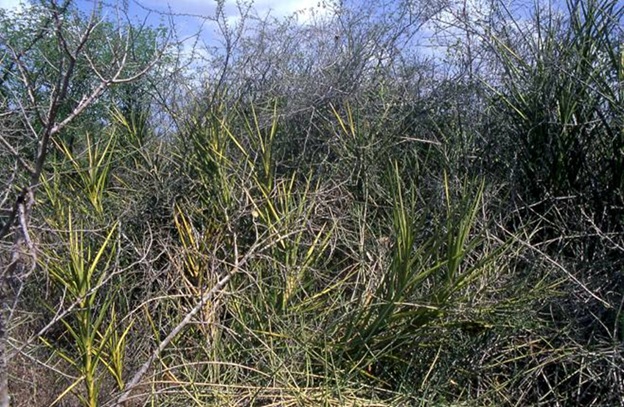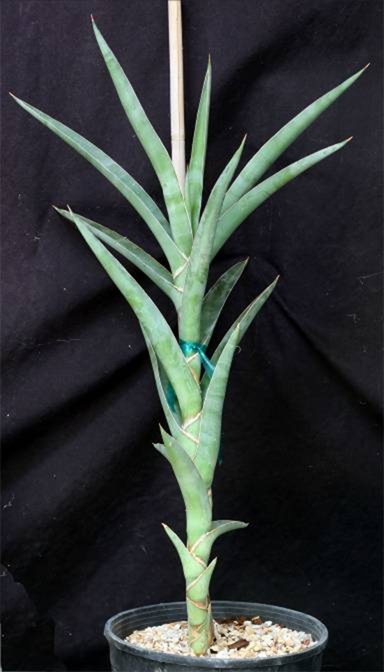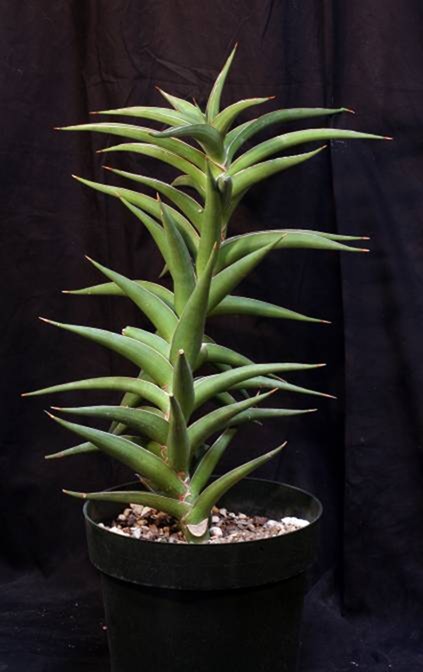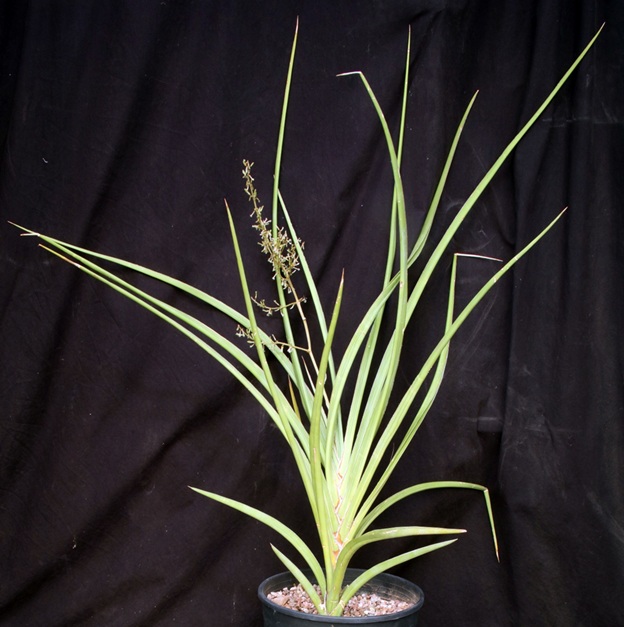| Protologue: |
Bulletin of the Museum of Natural History (Paris) 9: 173 (1903). |
| Subgenus: |
Paniculatus |
| Group: |
Sansevieria arborescens |
| Etymology: |
The epithet refers to the tall stem, although it does not branch like a tree. |
| Distribution: |
Southern Somalia to coastal eastern Kenya and northeastern Tanzania. |
| Brief Description: |
This caulescent and rhizomatous species forms dense stands in nature. The stem is 120-150 cm in height and up to 2.5 cm in diameter and bearing spiralling, rosulate leaves. The number of leaves depends upon the height of the stem, and they are 75-120 cm long and 1-3 cm in diameter with a lanceolate or linear-lanceolate shape. The upper leaf surface is smooth and concave with a broad channel typically the length of the leaf, which is gray-green to green in color with a whitish or reddish, slightly wavy margin and a sharp brown tip. The inflorescence is about 50 cm tall and paniculate with 4 – 6 flowers per cluster. The lateral branches of the inflorescence tend to be at roughly a 90 degrees angle to the main panicle. |
| Similar Species: |
Sansevieria arborescens can easily be confused with several other arborescent species with rosulate leaves, notably Sansevieria ascendens and S. powellii. Sansevieria ascendens tends to have larger leaves and a candelabra-like inflorescence, whereas S. powellii tends to be shorter with darker green leaves. Sansevieria ascendens has gracefully upturned branches unlike the typically straight branches of S. arborescens. |
| |
| |

Sansevieria arborescens at a site east of Tsavo National Park, Kenya.
|
| |

Sansevieria arborescens (Bhitala 1021) in cultivation, propagated from material originally collected near Tarassa, Kenya.
|
| |

A cultivated plant of Sansevieria arborescens (Lavranos 23251), originally collected northwest of Mogadishu, Somalia.
|
| |

A flowering specimen in cultivation of Sansevieria arborescens (Bhitala 1021)
|

